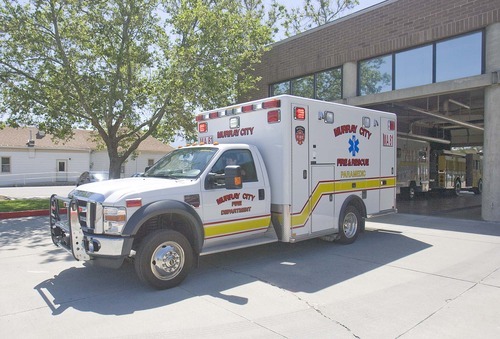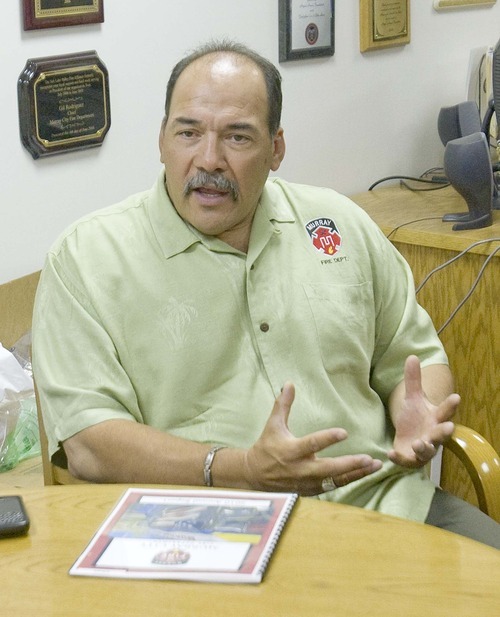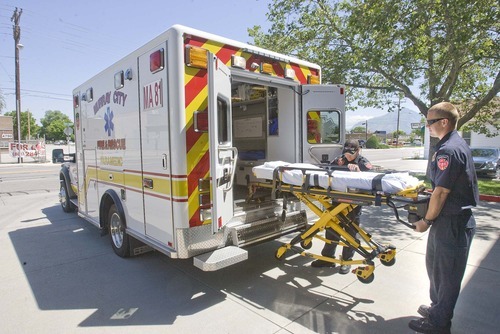This is an archived article that was published on sltrib.com in 2011, and information in the article may be outdated. It is provided only for personal research purposes and may not be reprinted.
Murray • Gil Rodriguez was driving around the city one day when he came across an accident. A car had rolled, injuring its occupants, including a pregnant woman.
Rodriguez, the city's fire chief, called it in and watched as firefighter-paramedics treated the injured and transported them to the hospital.
"To watch both [fire] engines come and two ambulances," Rodriguez said, "and watch them work and watch them work as fast as they do, is impressive."
More than three years ago, that story would have ended with the injured being loaded into a Gold Cross Ambulance. But for the past three years, the Fire Department has run its own ambulances to transport the injured.
The move was not spurred by dissatisfaction with Gold Cross, which still works with the city to provide transportation between hospitals. Rather, it was the next logical step in serving the community.
"When we looked at it, everything is tied to response time and how quickly we can get someone to a hospital," Battalion Chief Kevin Potter said. "When you have a trauma patient, and you don't have an ambulance on scene and you're waiting for one, that is not good."
The department strives for a four-minute response time to calls — though, Potter said, first responders usually make it in less than that.
In the past, he said, if patients required only basic medical treatment, Murray's paramedics would hand them off to the Gold Cross crew for transport to the hospital. If they needed more advanced treatment, paramedics rode along in the ambulance and had to be picked up — sometimes from Salt Lake City — which created logistical problems.
Adding ambulances to Murray's emergency services wasn't as simple as buying a rig. The city purchased three vehicles and hired nine additional firefighter-paramedics to staff them. Those crews are divided among three shifts, with other ambulance crew members coming from the firefighting ranks.
Rodriguez said the switch, with a start-up tab of about $1 million, has proven to be a wise investment. He said the ambulance fees have covered operating costs.
Murray's 2011 budget shows revenue from public safety expected to come in at $1.02 million. In 2009, for instance, it was $867,300.
In 2010, the Fire Department responded to 3,781 calls for medical assistance, out a total of more than 5,000 calls.
Rodriguez said a benefit of the ambulance change is continuity of service. Medics who initially treat the patients also transport them to the hospital.
"Gold Cross is good, but our guys know each other and they work together," Rodriguez said. They debrief one another after each call, looking for ways to improve service.
And, Rodriguez said, the city still has a good relationship with Gold Cross. The few issues that have come up have been minor and been dealt with amicably.
Chris DeLamare, Gold Cross spokesman, said there have been no problems with Murray. "As far as I know, we have a good relationship," he said.
Twitter: @donaldwmeyers
facebook.com/donaldwmeyers







